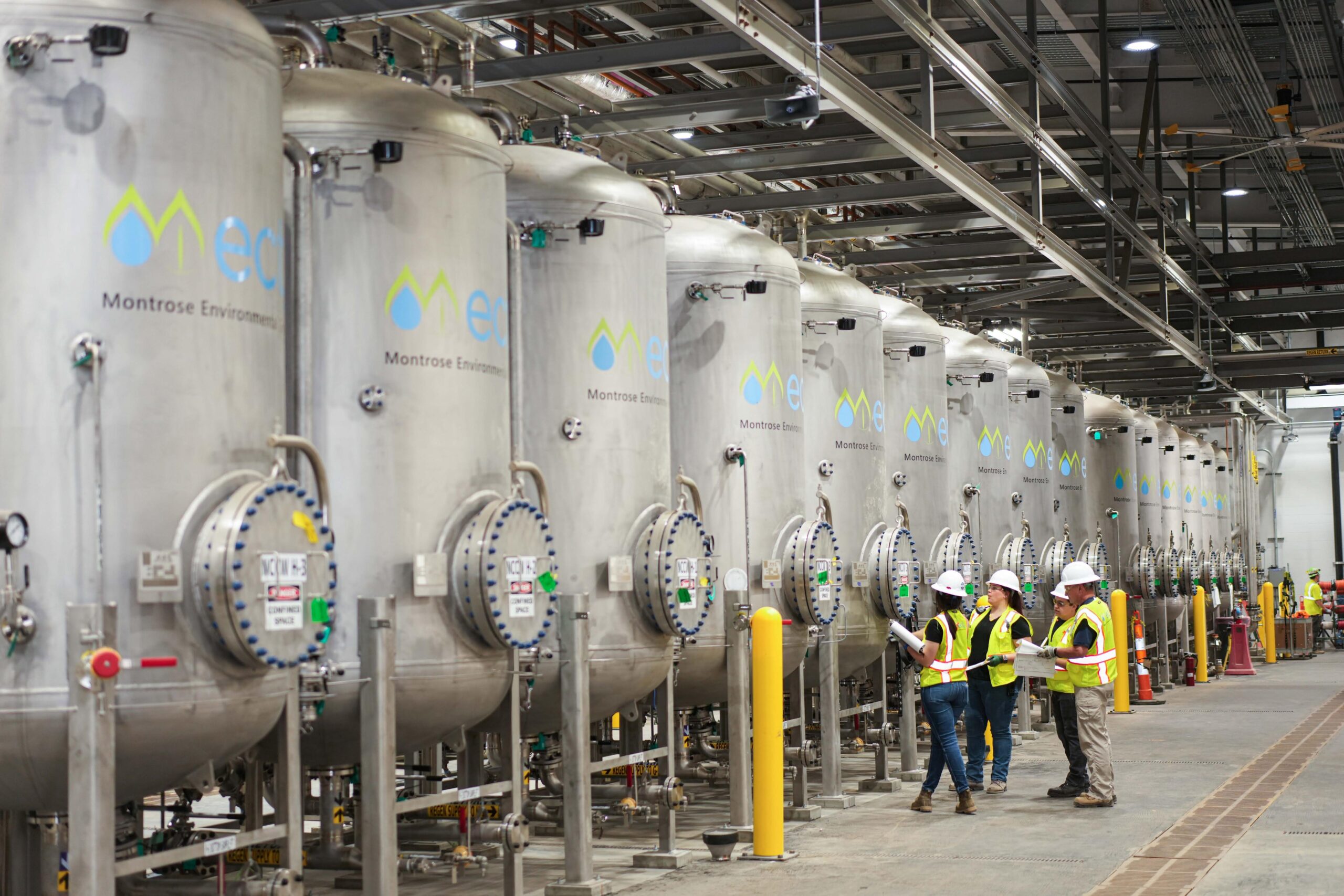Your Overview to PFAS Therapy Technologies and Advantages
The occurrence of PFAS contamination in water resources necessitates a complete understanding of offered therapy technologies. Each innovation not only targets particular PFAS substances but likewise plays an essential role in improving overall water quality and protecting environmental stability.
Recognizing PFAS Contamination
Understanding PFAS contamination is important for addressing its pervasive influence on ecological and human wellness (m270 pfas treatment). Per- and polyfluoroalkyl substances (PFAS) are a group of synthetic chemicals extensively utilized in various commercial and consumer items as a result of their water- and grease-resistant properties. Frequently discovered in firefighting foams, non-stick kitchenware, and water-repellent materials, PFAS have gone into the atmosphere through manufacturing procedures, wastewater discharges, and leaching from garbage dumps
Once launched, these materials persist in the atmosphere, bring about prevalent contamination of dirt and water sources. Their one-of-a-kind chemical framework, characterized by strong carbon-fluorine bonds, renders them immune to destruction, leading to a phenomenon called "forever chemicals." PFAS can gather in the human body and the food chain, possibly causing unfavorable wellness impacts, including immune system disturbance, developing issues, and a boosted threat of specific cancers cells.
Regulatory agencies and health companies are significantly identifying the importance of PFAS contamination, triggering efforts to keep track of, examine, and mitigate its results. Recognizing the pathways of PFAS contamination is crucial for educating public law and establishing effective techniques to secure both ecological and human health.
Summary of Therapy Technologies
Various therapy innovations have been developed to address the difficulties positioned by PFAS contamination in water and soil. These technologies can be extensively classified right into a number of groups, each with its one-of-a-kind mechanisms and effectiveness in eliminating PFAS substances.
One prominent strategy is ion exchange, which makes use of resin materials to capture and remove PFAS from contaminated water. This approach is specifically effective for short-chain PFAS and can attain significant reductions in focus levels. An additional innovation, progressed oxidation procedures (AOPs), utilizes solid oxidants and ultraviolet light to damage down PFAS right into much less hazardous compounds. AOPs appropriate for treating a wide variety of PFAS substances however might need cautious optimization to maximize efficiency.

Triggered Carbon Filtering
Turned on carbon filtration is an extensively used approach for the elimination of PFAS from contaminated water, understood for its capacity to adsorb a wide series of organic compounds. This technology employs turned on carbon, a highly permeable material with an extensive surface, which assists in the binding of PFAS molecules via physical adsorption. The effectiveness of activated carbon in getting rid of PFAS is affected by numerous elements, including the kind of carbon made use of, the contact time, and the focus of PFAS in the water.
One of the benefits of activated carbon purification is its versatility; it can be applied in various arrangements, such as granular turned on carbon (GAC) systems or powdered turned on carbon (POLITICAL ACTION COMMITTEE) systems. GAC systems are normally used in larger-scale applications, while political action committee can be utilized in smaller sized or temporary configurations. The modern technology is relatively very easy to operate and keep, making it available for numerous water therapy facilities.

Ion Exchange Systems
Ion exchange systems represent one more reliable method for the elimination of PFAS from polluted water, complementing methods like triggered carbon purification. These systems operate the principle of trading ions in the water with ions held on a resin product. Ion exchange resins can be specifically formulated to target the negatively charged PFAS substances, effectively recording them and allowing cleaner water to go through.
One of the main benefits of ion exchange systems is their ability to eliminate a vast array of PFAS, including both long-chain and short-chain variations. This flexibility makes them appropriate for different applications, varying from community water treatment to commercial processes. In addition, ion exchange systems can often achieve reduced detection restrictions for PFAS contrasted to a few other treatment approaches, hence enhancing water high quality.
However, it is important to keep track of and handle the regeneration of ion exchange media, as the efficiency can decrease with time as a result of saturation. Appropriate upkeep and substitute of the material are essential for sustaining the system's effectiveness. Generally, ion exchange systems give a dependable and reliable remedy for PFAS elimination, adding considerably to secure drinking water standards and environmental management.
Advanced Oxidation Processes
Advanced Oxidation Processes (AOPs) make use of effective oxidants to successfully degrade PFAS substances in polluted water. These innovative therapy approaches generate highly reactive types, such as hydroxyl radicals, that can break down other complex PFAS molecules right into much less hazardous byproducts. m270 pfas treatment. AOPs commonly utilize combinations of ultraviolet (UV) light, ozone, hydrogen peroxide, or Fenton's reagent, improving the oxidation capacity and boosting deterioration efficiency
The primary benefit of AOPs lies in their capability to target a wide series of PFAS substances, consisting of both long-chain and short-chain variations. This flexibility is important, as PFAS contamination often entails combinations of different compounds with differing chemical frameworks. AOPs can be integrated right into existing water therapy systems, making them a practical service for numerous check it out towns and sectors.
Nonetheless, the execution of AOPs can be resource-intensive, calling for careful consideration of operational expenses and power consumption. In addition, while AOPs work in breaking down PFAS, they might not completely get rid of all results, demanding more therapy actions - m270 pfas treatment. On the whole, AOPs stand for a promising method for dealing with PFAS contamination, adding to cleaner water sources and enhanced public wellness security

Final Thought
By selecting the appropriate modern technology, communities can improve water top quality, shield public health, and minimize the environmental risks connected with PFAS exposure. Continued research study and execution of these approaches are essential for efficient management of PFAS contamination in affected areas.